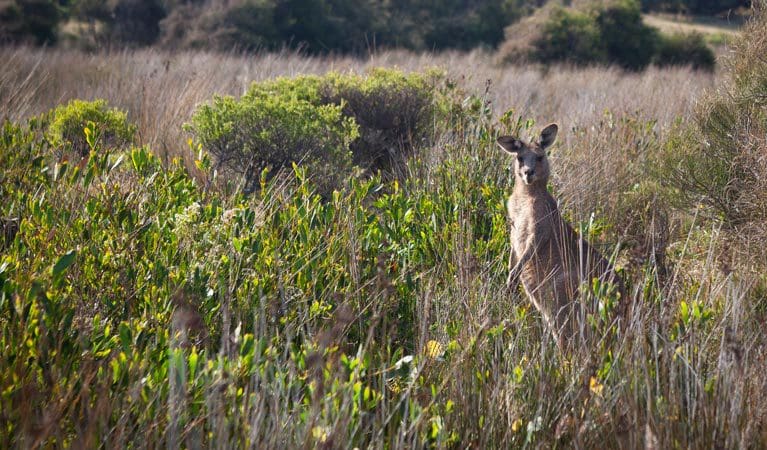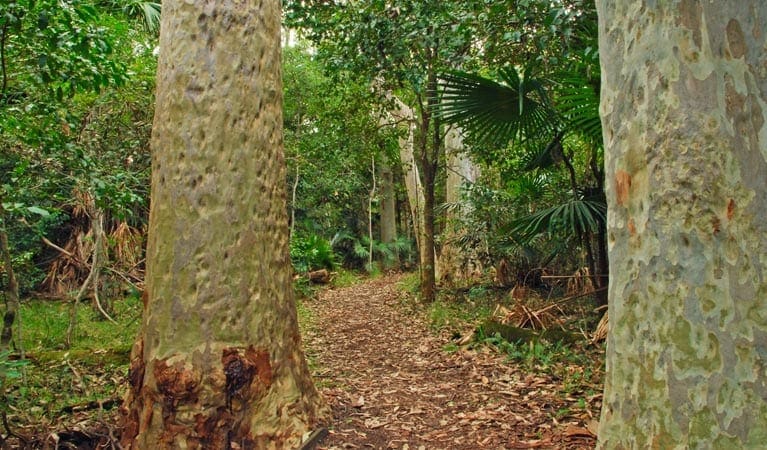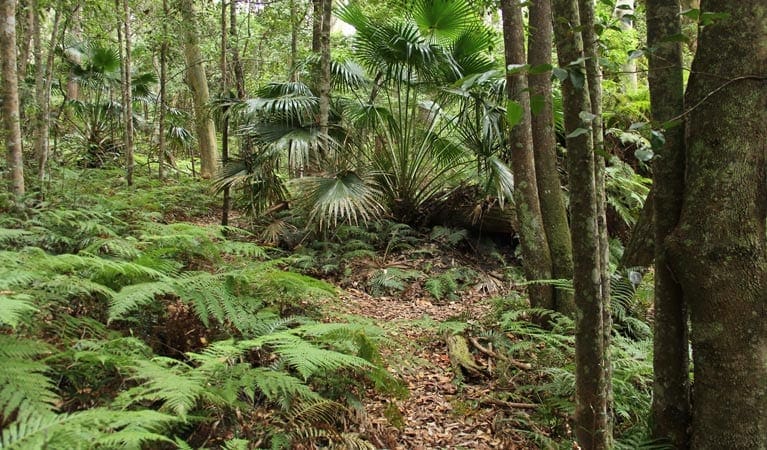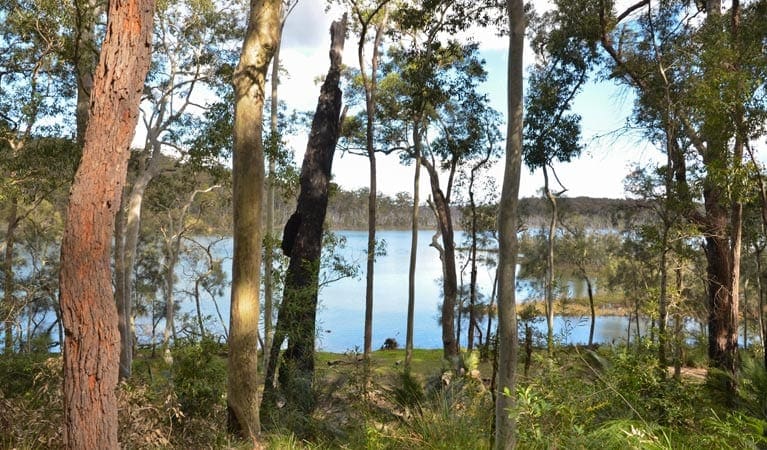Trail Fast Facts
Pretty Beach to Snapper Point walking track is a 1km, grade 3 hike in Murramarang National Park, New South Wales. This hike typically takes 45 minutes to complete.
Hike Overview
The Pretty Beach to Snapper Point walking track in Murramarang National Park provides a delightful escape suitable for all ages. This easy 1-kilometer (roundtrip) hike takes approximately 45 minutes to complete, making it ideal for families or casual walkers seeking a taste of the park's beauty.
The trail commences at the Pretty Beach picnic area, where grassy slopes offer a glimpse of the surrounding landscape. As you embark on the well-maintained northern track, be captivated by the she-oak forests that line the path. Keep your eyes peeled, as you might encounter a shy swamp wallaby or even spot a lyrebird foraging in the undergrowth.
The highlight of the walk awaits at Snapper Point lookout. Here, panoramic coastal views unfold, showcasing the dramatic coastline in all its glory. This vantage point is also renowned for whale watching opportunities during autumn and spring. Gaze out at the ocean and see if you can spot majestic whales migrating along the Australian east coast.
The diverse birdlife adds another layer of interest to the walk. Keep an eye out for gannets, sooty oystercatchers, and even peregrine falcons soaring along the cliffs.
After soaking in the scenery and fresh air, you can choose to return along the same track or extend your adventure. Head down to Merry Beach and explore its beauty before making your way back via the nearby campground.
Track Grade
Grade 3 (Moderate) - Walks for Most Fitness Levels: Grade 3 on the AWTGS represents moderate walking tracks. These are ideal for walkers with some fitness who are comfortable with some hills and uneven terrain. While suitable for most ages, some bushwalking experience is recommended to ensure a safe and enjoyable experience. Tracks may have short, steep hill sections, a rough surface, and many steps. The total distance of a Grade 3 walk can be up to 20 kilometers.
Map and GPX file
Max elevation: 51 m
Min elevation: 31 m
Total climbing: 35 m
Total descent: -35 m
Trailhead
Sorry, no records were found. Please adjust your search criteria and try again.
Sorry, unable to load the Maps API.
Getting there
Accessible by car, the Pretty Beach to Snapper Point walking track lies within the northern precinct of Murramarang National Park. Travelers can reach the trailhead by turning off the Princes Highway at Termeil. Follow signage directing you towards Bawley Point/Kioloa. After passing Kioloa, continue following signs to Pretty Beach. The route comprises a mix of sealed and unsealed roads, suitable for standard 2WD vehicles in all weather conditions. Convenient parking is available at the Pretty Beach Picnic Area.
Photo gallery
If you’ve got some great shots from this hike, I’d love to see them! Please upload your .jpg files here to help inspire other hikers and show off the beauty of the trail.
A quick note: Uploading your photos doesn’t mean you lose ownership. You’ll be credited for any photos you share, and you can request to have them removed at any time.
About the region
Murramarang National Park, a nature lover's paradise, stretches along 44 kilometers of dramatic coastline on the NSW south coast, near Batemans Bay. Here, visitors can camp under the shade of spotted gum trees that grow right down to the oceanfront, creating a stunning backdrop for a year-round escape. The park offers a variety of activities. Hike or bike along the trails, explore the cliffs and headlands, or relax on pristine beaches. Take a dip in the ocean, go surfing, or cast a fishing line for your dinner. Keep an eye out for eastern grey kangaroos and the abundant birdlife that call the park home.
The park is particularly famous for the multi-day Murramarang South Coast Walk, a spectacular 3-day adventure for experienced hikers. But there are options for all fitness levels. Explore the Durras Lake discovery trail, perfect for a family outing with children, or rent a canoe to paddle around the calm waters of Durras Lake. Whether you're looking for a day trip or a longer stay, Murramarang National Park has something for everyone. Choose from a variety of camping options, including caravan and motorhome sites with amenities, or book a cabin for a more comfortable stay.
Suggest an edit
Spotted a change on this trail? Maybe there are new features, the route has shifted, or the trail is permanently closed. Whatever the update, I’d love your input. Your feedback helps fellow hikers stay informed and ensures that our trail info stays fresh and reliable.
Similar trails nearby
Looking for things to do in Murramarang National Park or nearby? Try these similar hikes or bushwalks.
Let someone know
Adventure with Confidence: Register Your Trip Plans
Before you hit the trail, take a moment to fill out our trip intentions form. It’s a simple way to share important details about your hike with family or friends. If things don’t go as planned and you’re not back on time, they can easily notify emergency services, helping to ensure a quick response and reducing worry. Enjoy your outdoor adventure knowing that you’ve taken a smart step for your safety.
Gear to consider
What you carry in your pack will depend on the weather, terrain, time of year, type of adventure, and personal preferences. Having trouble deciding what gear’s right for you? My free planning, food and packing checklists provide an introduction to things your could consider (as well as the Ten Essentials) on your day, overnight and multi-day adventures. Customise your kit according to your personal needs, always considering safety first.
Explore Safe
While planning your hike, it’s important to check official government sources for updated information, temporary closures and trail access requirements. Before hitting the trail, check local weather and bushfire advice for planned burns and bushfire warnings and let someone know before you go. Plan ahead and hike safely.
Weather
Acknowledgement of Country
Trail Hiking Australia acknowledges the Traditional Owners of the lands on which we hike and pay respects to their Elders, past and present, and we acknowledge the First Nations people of other communities who may be here today.






